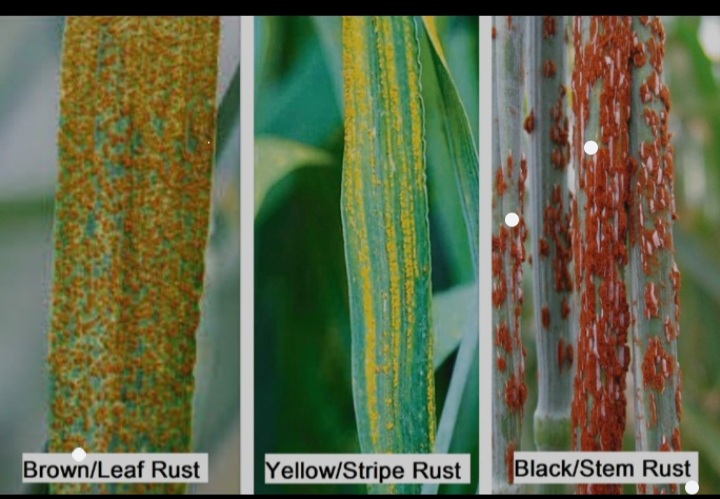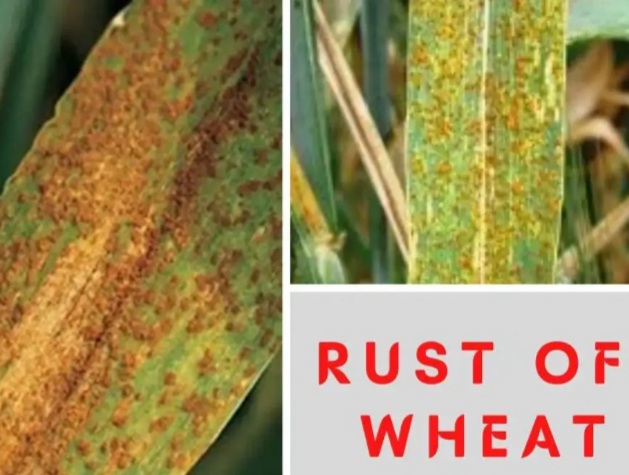Three types of wheat rust diseases
Leaf rust, also known as brown rust, is caused by the fungus Puccinia triticina. This rust disease occurs wherever wheat, barley and other cereal crops are grown. Leaf rust attacks foliage only
Rust diseases possess the ability to spread and travel long distances by dispersal of windborne spores and can rapidly develop under optimal weather condition
There are three types of rust diseases affecting wheat:
leaf rust (also known as brown rust or orange rust), stripe rust (commonly known as yellow rust), and stem rust (commonly referred to as black rust of black stem rust)

different types of wheat rusts
Leaf rust cause substantial yield losses if not
adequately managed. Rusts are notorious for their ability to spread rapidly and reduce wheat yield and quality. It all depends on the susceptibility of the variety, race of the pathogen present, timing of infection, and the weather conditions. Damage to wheat depends on the growth stage at the time of infection and the overall level of rust severity. High levels of disease before or during flowering usually have the greatest impact on yield. Rust causes losses by reducing the number of kernels per head and the size of the kernels, and by lowering test weight and the protein content of the grain.
In the case of stem rust, additional losses may result from girdling of the stems which cause plants to lodge. However, for years, the widespread use of rust-resistant varieties has substantially reduced losses caused by leaf, stripe and stem rust. In addition, since none of the rust fungi typically overwinter in Ohio and other parts of the Midwest, spores have to be blown up from the south in order for these diseases to develop, and in most years, this usually occur very late in the season, towards. the end of grain development

